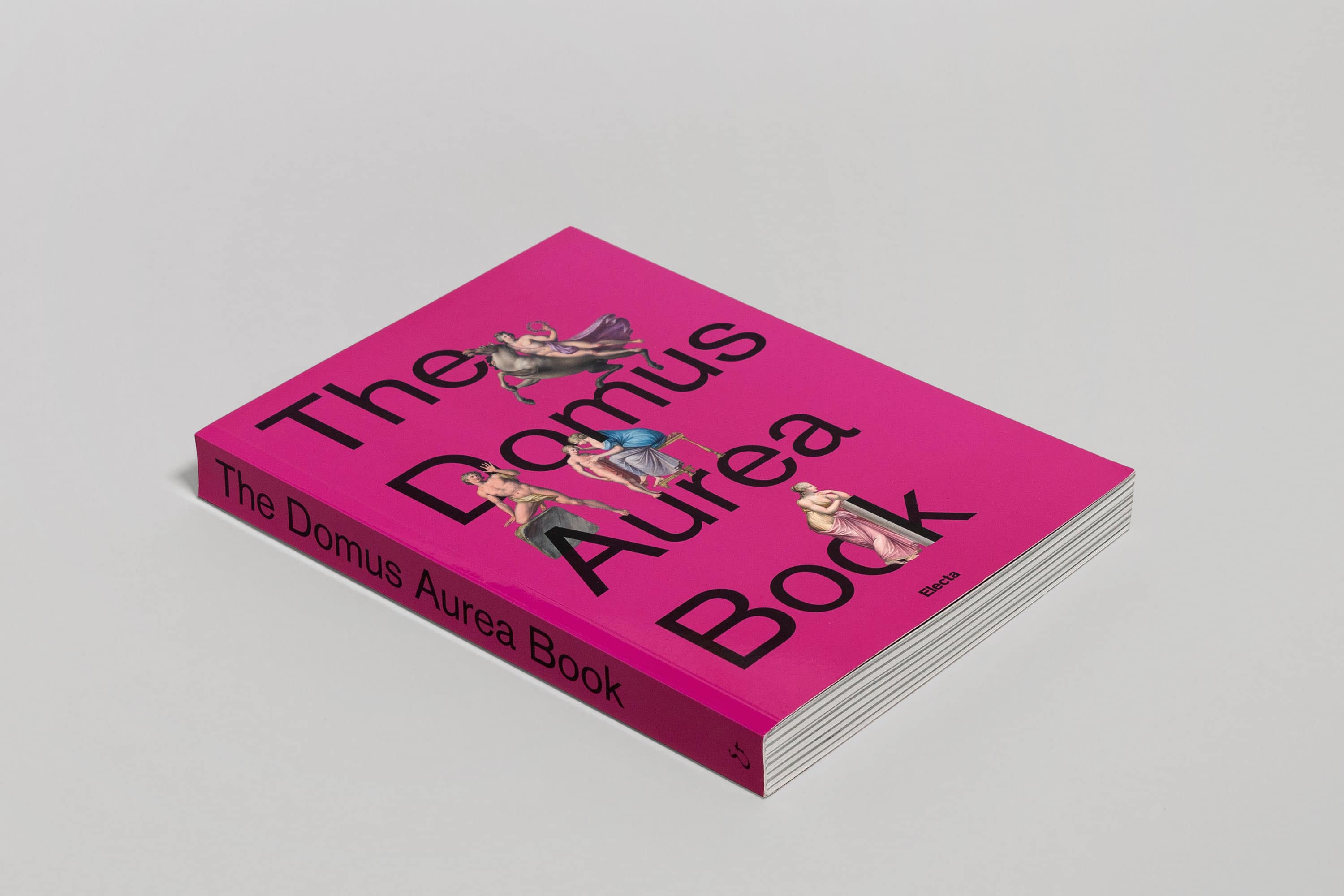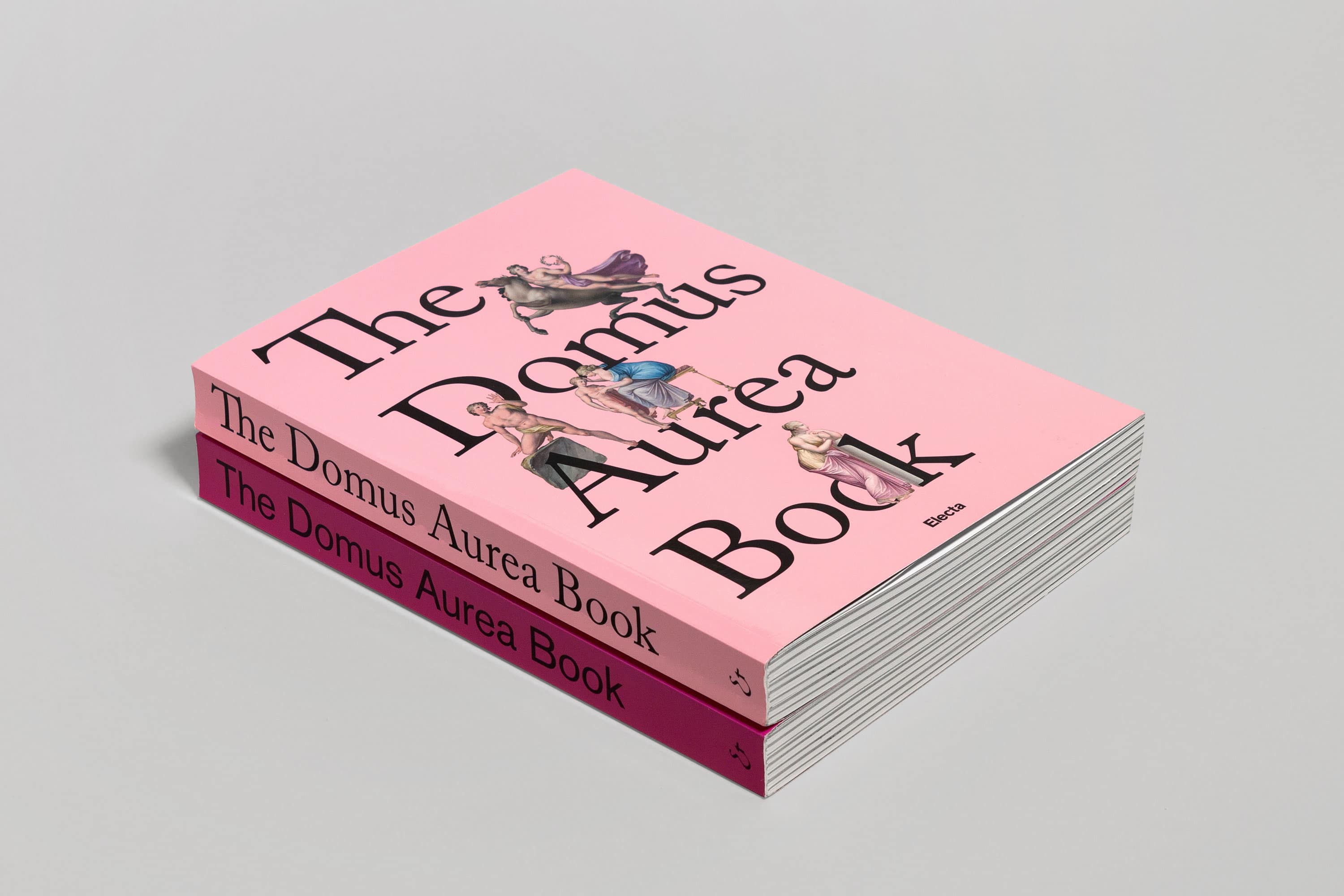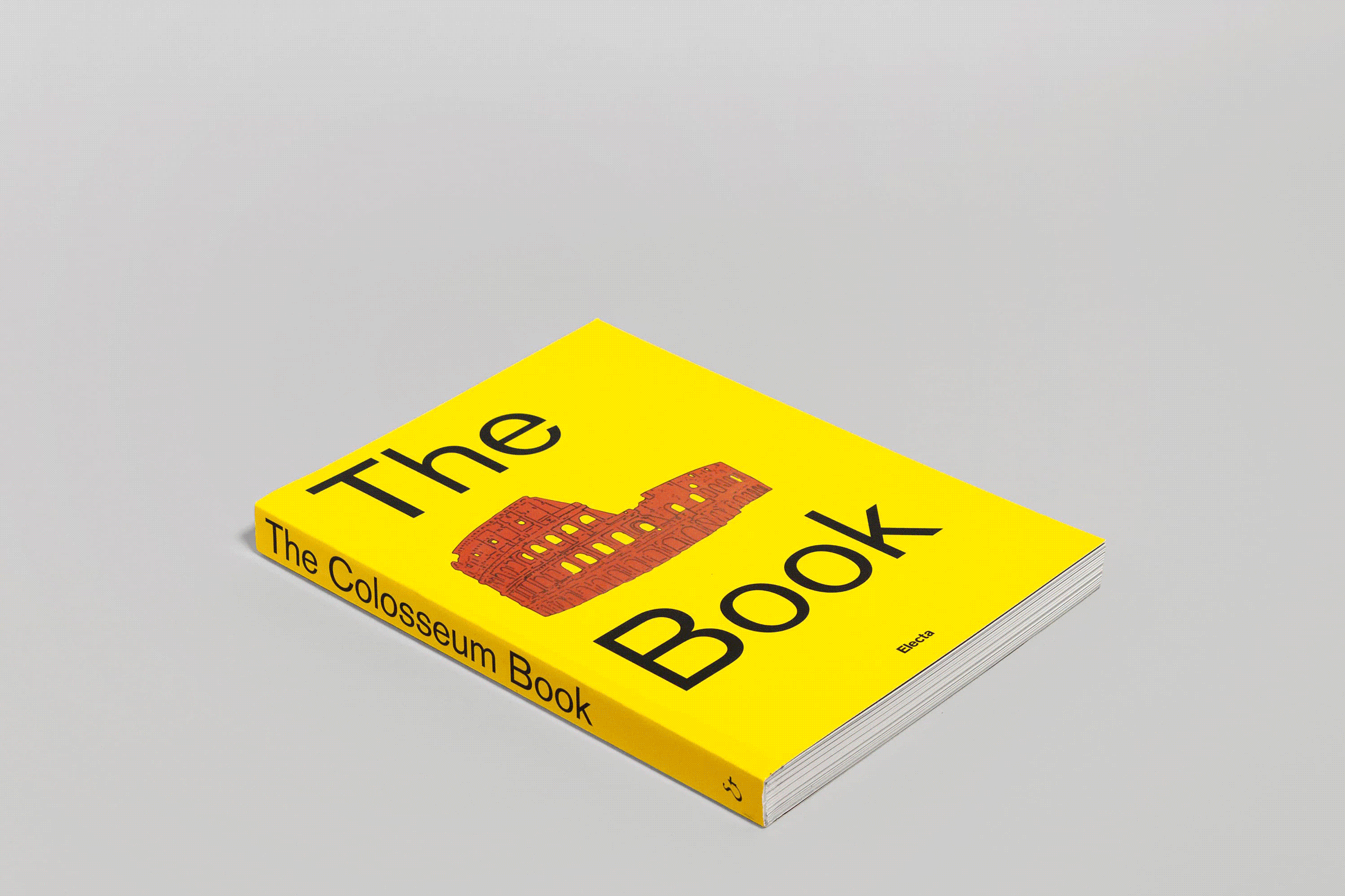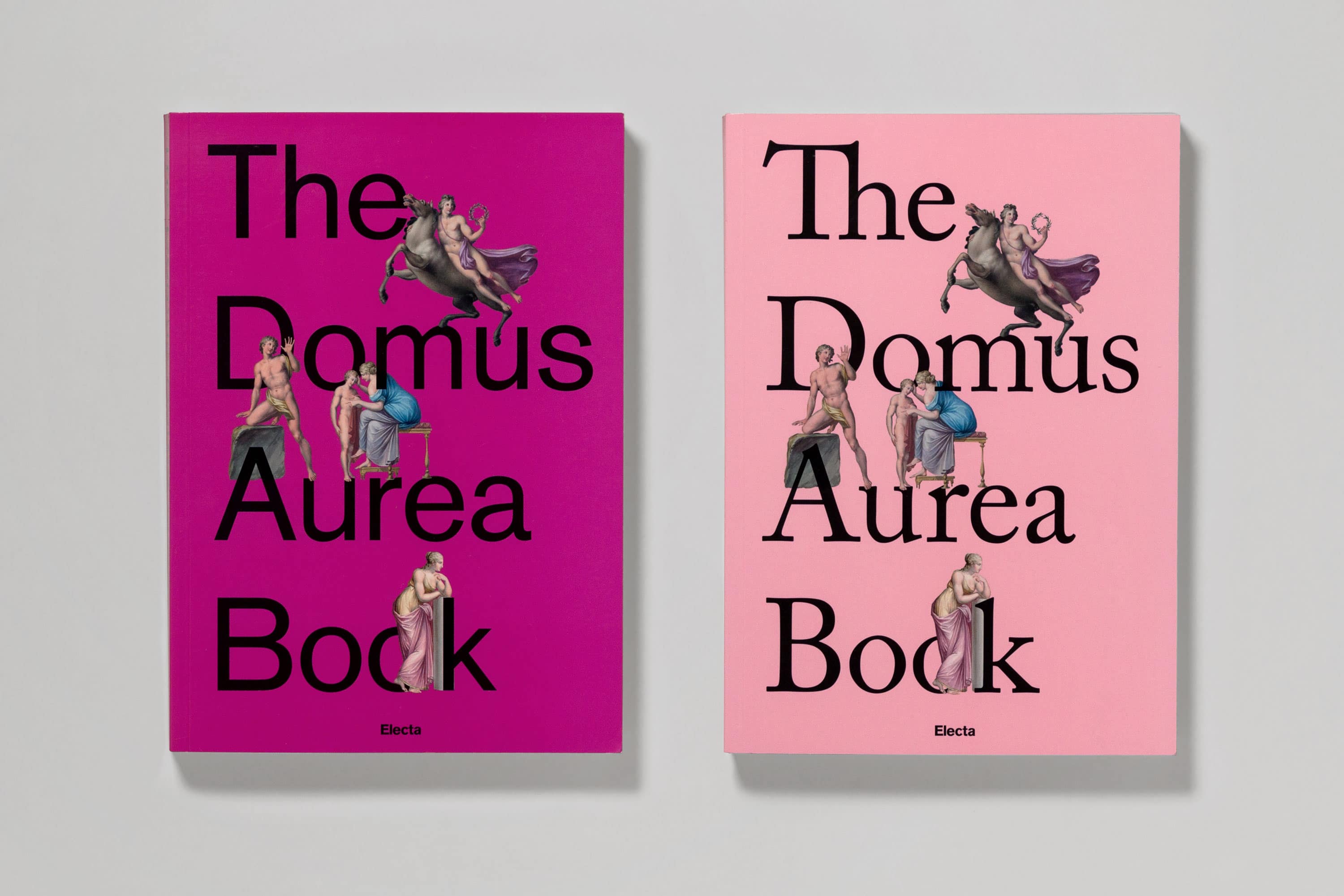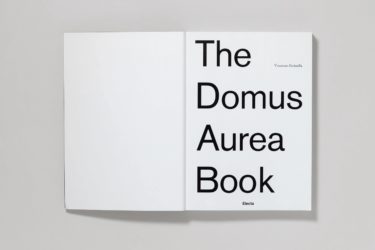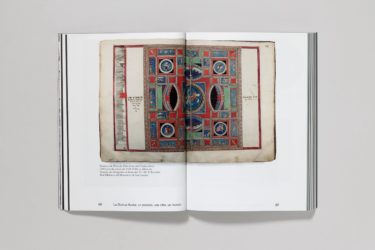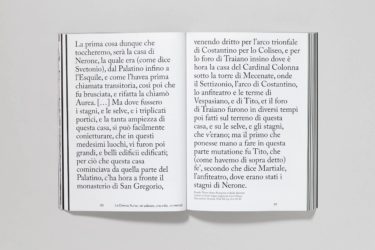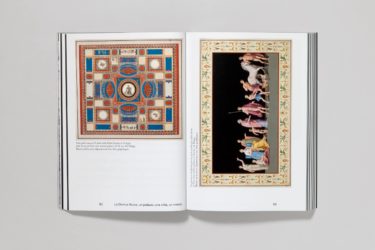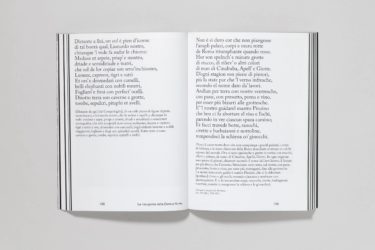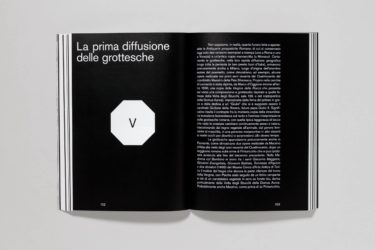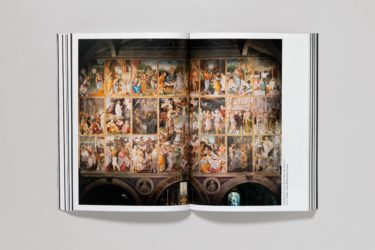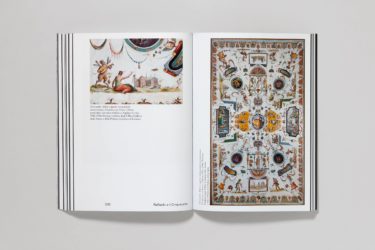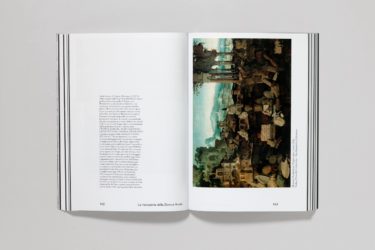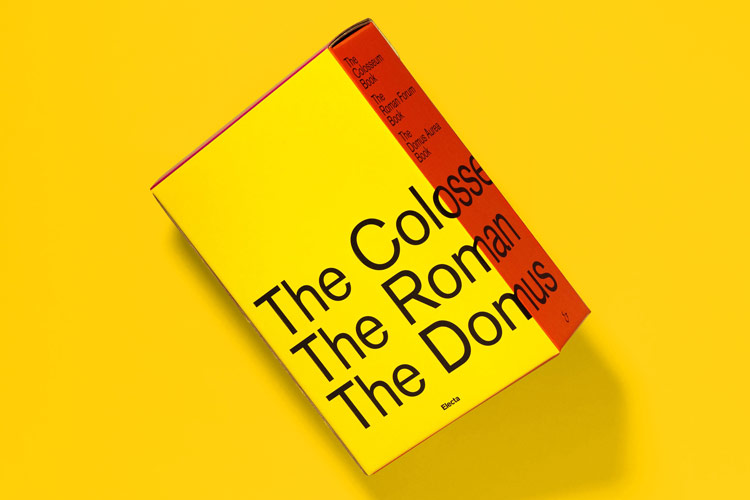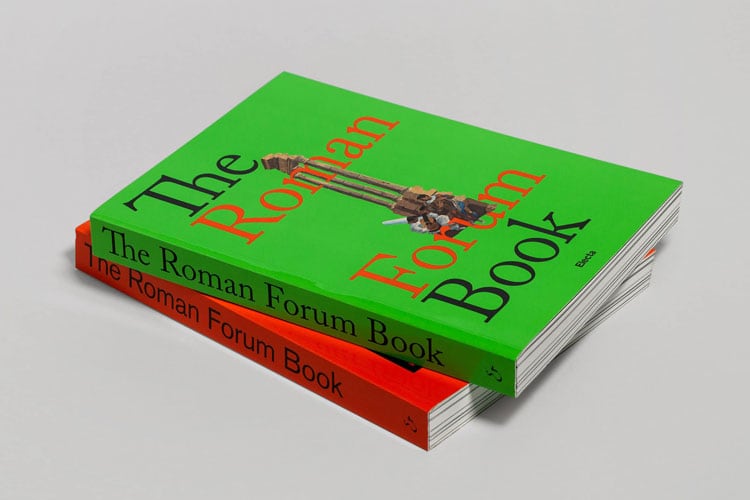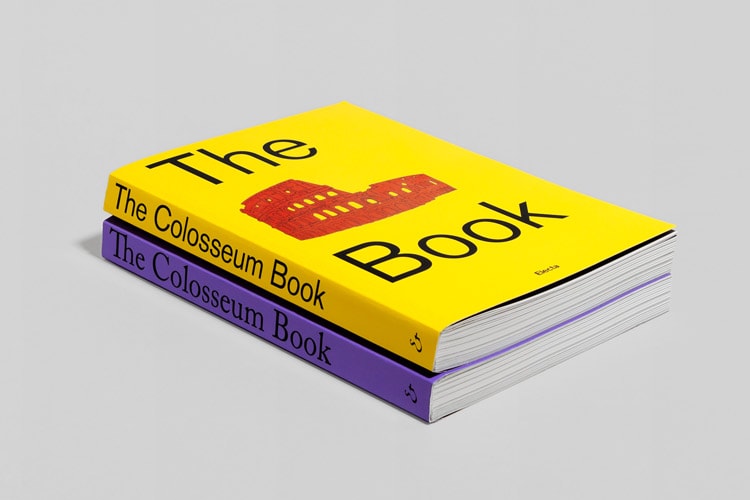The Domus Aurea Book
«The Domus Aurea was a world that included within its vast borders all that the world offers to its inhabitants. There were the waters of sea and land, a city, wild and cultivated nature, wild and domestic animals, the temples of the gods, the signs of the sky. And the imperial palace was its heart. But those wild animals, which lived together with domestic animals, those woods, impenetrable as in ancient times, revealed a second meaning. The Domus Aurea represented the golden age, when the flocks did non fear lions, and the earth was spontaneously covered with grapes, honey and wheat.»
Pietro Citati, La “Domus Aurea”, 1974
The third chapter of the Parco Archeologico del Colosseo saga, which comes after The Colosseum Book and The Roman Forum Book, narrates the history of the Domus Aurea, from the Neronian opulence to the relationship with Raffaello, up to the influences on contemporary art.
The Domus Aurea Book
Curated by Vincenzo Farinella
Publisher Electa
Size 17×24 cm
Pages 312
Binding Paperback
Year of publication 2019
ISBN 9788891828477
«La Domus Aurea era un mondo, che comprendeva nei suoi vasti confini tutto quello che il mondo offre ai suoi abitatori. C’erano le acque marine e terrestri, una città, la natura selvaggia e coltivata, gli animali feroci e domestici, i templi degli dèi, i segni del cielo; e il palazzo imperiale ne era il cuore. Ma quegli animali selvaggi, che vivevano insieme agli animali domestici, quei boschi impenetrabili come nelle età antiche rivelavano un secondo significato. La Domus Aurea rappresentava l’età dell’oro, quando le greggi non temevano i leoni, e la terra si copriva spontaneamente di uva, di miele e di spighe di grano.»
Pietro Citati, La “Domus Aurea”, 1974
Terzo capitolo della saga dedicata al Parco Archeologico del Colosseo, che dopo The Colosseum Book e The Roman Forum Book racconta le vicende della Domus Aurea, dalla sfarzosità voluta dall’imperatore Nerone ai legami con Raffaello, fino ad arrivare alle contaminazioni con l’arte contemporanea.
The Domus Aurea Book
A cura di Vincenzo Farinella
Editore Electa
Formato 17×24 cm
Pagine 312
Confezione Brossura
Anno di pubblicazione 2019
ISBN 9788891828460
